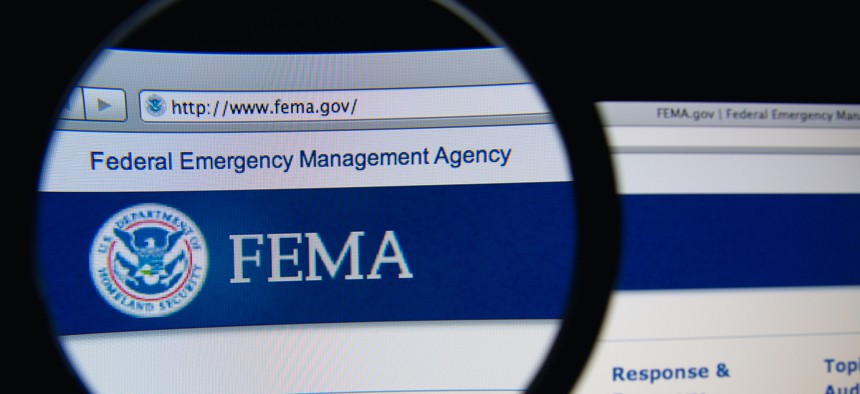Shoddy IT is Limiting FEMA's Ability to Respond to Disasters, IG Says

A watchdog cautioned about longstanding problems with IT at FEMA. Shutterstock

Connecting state and local government leaders
Some of the outstanding recommendations go back to 2005, just after Hurricane Katrina.
Longstanding technology troubles at the Federal Emergency Management Agency could get in the way of the organization’s disaster response efforts as hurricane season gets underway, according to the Homeland Security Department inspector general.
FEMA’s outdated IT impedes the agency’s ability to integrate systems across mission functions, manage disaster funds, share information with emergency management partners and coordinate disaster response efforts, according to John Kelly, the senior official performing the duties of the inspector general at DHS.
The shoddy tech infrastructure creates numerous delays in day-to-day operations, Kelly said, and it limits how quickly the agency can scale up to respond to major disasters. Employees are frequently left to create manual workarounds to conduct critical emergency response efforts, a process Kelly said wastes “considerable” time and money.
The Office of the Inspector General previously reported many of the existing issues to FEMA, but officials have yet to take action on the majority of the watchdog’s recommendations, some of which date back to September 2005, just after Hurricane Katrina.
“Major disasters over the past number of years exposed numerous limitations in FEMA’s IT infrastructure and system capabilities,” Kelly said in his testimony before the House Homeland Subcommittee on Emergency Preparedness, Response and Communications. “Until FEMA provides the IT systems and capabilities needed to meet the demands posed by emergency management, timely response and recovery from disasters will be hindered, increasing the risk of delays in providing disaster assistance and grants.”
OIG attributes FEMA’s technological shortcomings to insufficient IT management. The agency is missing a strategic plan to guide IT programs and modernization efforts, and officials generally don’t know what technologies they have at their disposal, Kelly said.
He added FEMA’s chief information officer doesn’t have the authority to guide enterprisewide tech projects and the agency largely lacks a governance process to guide IT acquisitions.
During the hearing, FEMA Deputy Administrator for National Preparedness Daniel Kaniewski said officials are working to address the IT issues with a newfound urgency in the wake of last year’s devastating hurricanes and wildfires.
“We’ve embraced [the OIG] findings and are doing our best to implement them,” said Daniel Kaniewski, FEMA’s deputy administrator for national preparedness. “We can’t fix them overnight but we’re putting personnel and resources toward fixing them.”
Still, OIG has yet to see FEMA increase its efforts to upgrade IT or make any specific tech improvements ahead of this year's hurricane season, OIG Senior Public Affairs Specialist Arlen Morales told Nextgov.
Last year, hurricanes Harvey, Irma and Maria together caused more than $265 billion in damages in the Caribbean and Southeast U.S., and FEMA is still actively involved in recovery efforts. As the 2018 hurricane season ramps up, Kaniewski said officials are working to better position personnel and resources in disaster-prone areas, but warned help can sometimes take a while to arrive and Americans need to do a better job preparing for emergencies.
“FEMA is not a first responder,” he said. “FEMA cannot be there in the minutes, hours and sometimes days after a disaster.”
Jack Corrigan covers emerging government technology and IT policy for Government Executive's Nextgov.

NEXT STORY: DARPA launches program to ensure U.S. AI dominance





